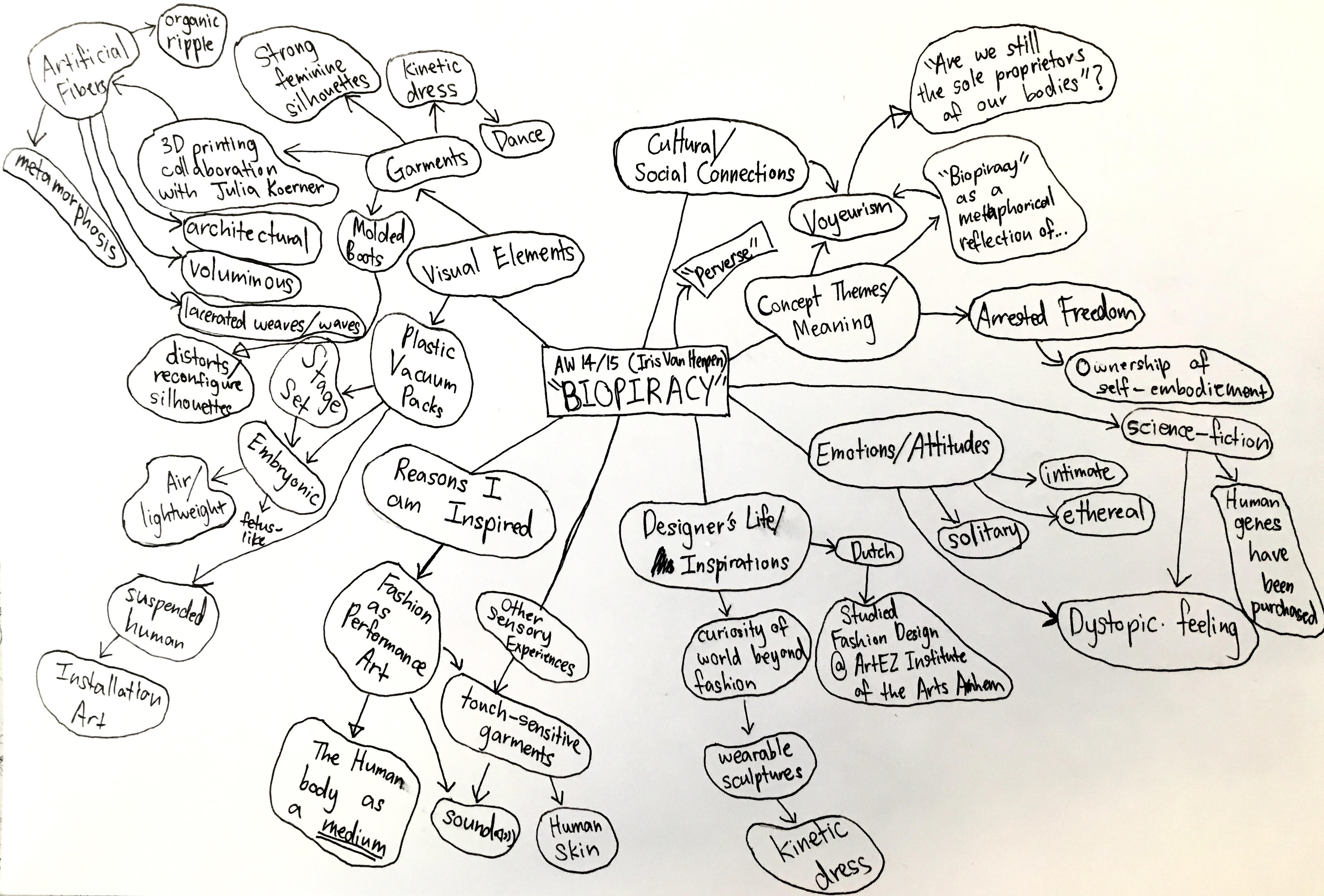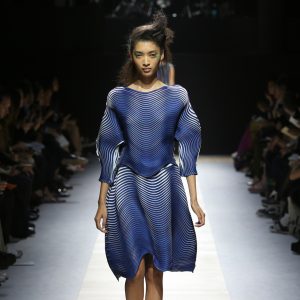Designer 1 – Rei Kawakubo (Comme des Garçons)
- Copyright © 2013 infinitas. Article Photo for Denim Jeans Observer www.denimjeansobserver.com All brands, product names, corresponding products, supplementary materials, graphic or photographic images, licenses, registered trademarks, trademarks and service marks are the property of their respective owners.
Rei Kawakubo is a Japanese fashion designer who founded Comme des Garçons. She works with extending the human silhouette a lot and also deals with the notion of different ideas of feminine standards. I am interested in her works because I find the idea of distorting the silhouette of a human body intriguing. I can relate to how one might choose to not conform to the societal standards of curves in my own works. Kawakubo also collaborates with dancers, which is something I am interested in, I would like to explore the combination of garments and performance art.
Designer 2 – Iris Van Herpen
Iris Van Herpen is a dutch designer that uses a lot of digital fabrication to construct garments. I was interested in how the digital age and technology is influencing garments and how that might differ from traditional forms of fashion making. I would also like to explore the possibilities as well as limitations of digital fabrications. Iris Van Herpen also addressed the issue of inevitable voyeurism in the Fashion industry which is one of the many topics I see an importance in dealing with.
Designer 3 – Issey Miyake
Issey Mikaye is also a Japanese fashion designer. He was a sculptor before he became a fashion designer. It would be interesting to see how his works transit from sculptures to garments or even represent both aspects. His works are also very technologically driven, however, they do look a lot less futuristic as compared to the works of Iris Van Herpen. It would be interesting to see how different designers utilize technology similarly, or differently. Incorporating technology into fashion seems to be an inevitable element in this day and age.
Selected Designer for Research – Iris Van Herpen
One of Iris Van Herpen’s collection was her AW14 womenswear collection titled, “Biopiracy”.
Video of runway: https://www.youtube.com/watch?v=e99eAilOb6Q
Designer: Iris Van Herpen
Date: 2014 – 2015
Season: Autumn Winter 2014
Collection: Womenswear – Biopiracy
Images from runway
- Iris van Herpen, AW14/15
- Iris van Herpen, AW14/15
Word Web
Collection Summary
“Are we still the sole proprietor of our bodies?”[1] Iris Van Herpen’s AW14/15 collection – Biopiracy asked. During the runway show, as part of the stage set up, there were models suspended in vacuumed plastic sheets, seemingly in an embryonic, fetus-like silhouette. There was an ethereal milieu in the show, it reminds me of something dystopic, something science-fiction related. Perhaps, the title, “Biopiracy” was both literal as well as a metaphor for the inherent issue of voyeurism in the fashion industry. I was drawn to Van Herpen’s works because through the runway show, with her garments and 3D printed footwear, Van Herpen has managed to present garments as wearable art, and Fashion as performance art. I could relate to these elements in my own works, as well as the human body as a medium for art. The garments in the collection were touch-sensitive, which created a unique sensory experience. The footwears were molded and they reconfigured the silhouettes of the models. The color story of the show was filled with silver, and monochrome black and white, juxtaposed against neutral colors like beidge that resembled the human skin tone. This made the obvious introduction of a natural human element to science and technology, which felt slightly uncomfortable, yet really intriguing.
[1] “Biopiracy” Iris Van Herpen: Womenswear
http://www.irisvanherpen.com/womenswear#biopiracy
10 Initial Research Questions
- How has the collection – Biopiracy, played an important role in its cultural and social context?
- How does the attention to intricate digital fabrication bring out the concept in Van Herpen’s works?
- At what point in an artistic process, does fashion actually become performance art?
- Van Herpen collaborated with Julia Koerna for the 3D printing, how did that limit or liberate Van Herpen’s own artistic expression?
- Who are Van Herpen’s audiences? How does a male view her works and how does a female view her work? Perhaps, voyeurism means differently to different genders.
- With the concept of “arrested freedom” and “ownership of self-embodiment”, how does fashion conceal the human body, yet reveals the emotional attributes of it?
- How do Van Herpen’s works define the different stages of “metamorphosis”?
- Why is it that she chooses to use strong, voluminous, architectural silhouettes?
- What makes the runway show an intimate experience with the audience?
- Would it make a difference if the garments were presented on mannequins instead? What kind of difference?
























